This article was medically reviewed by Luba Lee, FNP-BC, MS. Luba Lee, FNP-BC is a Board-Certified Family Nurse Practitioner (FNP) and educator in Tennessee with over a decade of clinical experience. Luba has certifications in Pediatric Advanced Life Support (PALS), Emergency Medicine, Advanced Cardiac Life Support (ACLS), Team Building, and Critical Care Nursing. She received her Master of Science in Nursing (MSN) from the University of Tennessee in 2006.
This article has been viewed 86,048 times.
A bleeding mole is usually nothing to worry about. Just like any other patch of skin on your body, a mole will bleed if you scratch it (e.g., with a razor). In these cases, you can stop the bleeding by applying pressure with a cotton ball or washcloth. Once the bleeding stops, clean the area with soap and warm water, dry it off, and apply antibacterial ointment and a Band-Aid. It’s more serious if a mole starts bleeding on its own, and especially so if the same mole bleeds without provocation multiple times. Since this can be a sign of melanoma, schedule an appointment with your doctor so they can analyze the mole.
Steps
Applying First Aid to a Mole
-
1Press a clean, warm, wet washcloth or cotton gauze against the cut for about 30 seconds. Dampen a washcloth or piece of cotton gauze with warm tap water and hold it against the bleeding mole. Applying pressure will restrict the flow of blood and allow a scab to form. The water on the washcloth will also clean dirt from the cut. If the mole hasn't stopped bleeding after 30 seconds, continue applying pressure until the bleeding stops.[1]
- If you’d rather not get blood on a washcloth, try using a paper towel or a clean rag.
-
2Hold an ice cube against the mole for 30 seconds. Once you’ve stopped the bleeding, lightly press an ice cube against your cut. This will constrict the small capillaries right beneath your skin and prevent the small wound from reopening.
- Depending on the size of the cut mole, you might only need to hold the ice cube in place for as few as 15 seconds. Try removing the ice cube after 15 seconds and see if the mole still bleeds.
Advertisement -
3Disinfect the cut mole with soap and water or an alcohol prep pad and apply an antibiotic cream. Since a small amount of bacteria may have gotten into the mole when it was cut, it’s a good idea to disinfect the wound before covering it. Wash the area with soap and water or wipe it with an alcohol prep pad. Then, pat it dry and apply a small dab of an antiseptic or antibiotic cream or ointment (like Neosporin) onto the scraped mole. This kind of cream comes in most first-aid kits or can be purchased at a local drug store or pharmacy.[2]
- As an alternative to the antibiotic cream, splash a small amount of alcohol-free aftershave onto the cut. Or, if you don’t have aftershave, use a splash of witch hazel toner to disinfect the cut. You can purchase aftershave or a witch hazel toner at a pharmacy or department store.
-
4Apply a Band-Aid to the mole to prevent re-injury. Once the mole has stopped bleeding, cover it with a Band-Aid. This will soak up any remaining blood and prevent dirt and dust from getting into the skin wound.[3] If you’re concerned about the cut getting infected, cover the absorbent patch of the Band-Aid with a small amount of medical disinfectant like Neosporin.
- If the mole is in a location where a Band-Aid would fall off (e.g., your knee), purchase a specialty Band-Aid designed to fit a joint like your elbow or knee.
- The scratched mole should heal completely within 2-3 days.
-
5Dab petroleum jelly or lip balm onto the bleeding mole if you don’t have a Band-Aid. If you happen to nick a mole when you’re away from a first-aid kit, you can cover the scratch with petroleum jelly or lip balm. Smear a small amount of the petroleum jelly or lip balm onto your cut mole after you’ve stopped the bleeding with a washcloth. This will form a barrier that keeps blood inside of the cut mole and keeps bacteria out.[4]
- Gently wipe off the lip balm after about 30 minutes.
-
6Cover a severely bleeding mole with gauze by applying pressure. If your mole is bleeding heavily enough that it soaks through a Band-Aid, cover it instead with a 2 in × 2 in (5.1 cm × 5.1 cm) patch of gauze. Use 2-3 strips of medical tape to secure the gauze in place. The sterile gauze will absorb more blood than a Band-Aid and will also effectively block bacteria from entering the wound.[5]
- You can purchase gauze and medical tape at any large supermarket or pharmacy.
Seeing a Doctor for a Bleeding Mole
-
1Visit your doctor if a mole starts bleeding without provocation. If you haven’t scraped or scratched a mole and it begins to bleed, call your general practitioner and make an appointment. Moles that spontaneously start bleeding can be a sign of melanoma or other types of skin cancer. Also make an appointment if your mole looks like an open sore, whether or not it’s bleeding, or if a scratched mole continues to bleed after you've applied first aid.[6]
- Fortunately, if they’re spotted early, it’s easy to remove bleeding moles and all cancerous cells.
-
2Describe the mole and related symptoms to your doctor. Malignant moles tend to evolve over time. This means that their shape, color, and height will change. Along with bleeding, malignant moles often turn black. Tell your doctor how long your mole has bled for, whether or not it’s painful, and whether the mole has felt itchy or uncomfortable.[7]
- If your mole started bleeding without any accompanying evolution, mention this to your doctor as well.
-
3Ask your doctor if they recommend surgery to test the mole. If your doctor suspects that a bleeding mole may be cancerous—or if the mole is causing you pain and discomfort—they may suggest that the mole be surgically removed. Samples of the mole tissue will be sent to a laboratory and tested for malignant tissue. Since removing a mole is a relatively minor surgery, you’ll only be given a local anesthetic. The removal will likely be performed by your general practitioner.[8]
- Even if the mole is cancerous, it’s very likely that surgery will remove 100% of the malignancy and leave you free of skin cancer.
-
4Never attempt to remove your own mole at home. Even if you suspect that a mole may be cancerous, never try to remove it at home. Although moles are small, removing one is technically a surgical procedure and should only be done by a doctor. You could unintentionally scar your skin or cause an infection by trying to cut a mole off of your own body.[9]
- An at-home mole removal is also likely to leave cancerous cells behind in your skin.
References
- ↑ https://www.aad.org/public/skin-hair-nails/injured-skin/minor-cuts
- ↑ https://www.mayoclinic.org/first-aid/first-aid-cuts/basics/art-20056711
- ↑ https://www.aad.org/public/skin-hair-nails/injured-skin/minor-cuts
- ↑ https://www.aad.org/public/skin-hair-nails/injured-skin/minor-cuts
- ↑ https://www.medicalnewstoday.com/articles/322703.php
- ↑ https://www.mayoclinic.org/diseases-conditions/moles/symptoms-causes/syc-20375200
- ↑ https://www.mayoclinic.org/diseases-conditions/moles/symptoms-causes/syc-20375200
- ↑ https://www.medicalnewstoday.com/articles/322703.php
- ↑ https://www.medicalnewstoday.com/articles/322703.php
About This Article
If your mole has started bleeding, use some simple first aid. Apply pressure to your mole with a clean, warm, and damp washcloth and check it every 30 seconds or so until it stops bleeding. Once you’ve stopped the bleeding, hold an ice cube against the cut for 30 seconds to shrink the blood vessels and keep the wound closed. Then, clean the mole with soap and water and rub in a little antibiotic cream to disinfect it. Cover it with a Band-Aid to prevent any dirt from getting in the wound until it heals. A bleeding mole is usually nothing to worry about if you scratched it by accident. However, if your mole keeps bleeding without any damage to it, visit your doctor, since this could be sign of a more serious condition. For more tips from our Medical co-author, including how to protect your mole without a Band-Aid, read on!
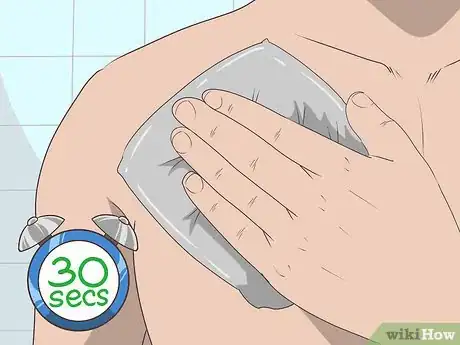
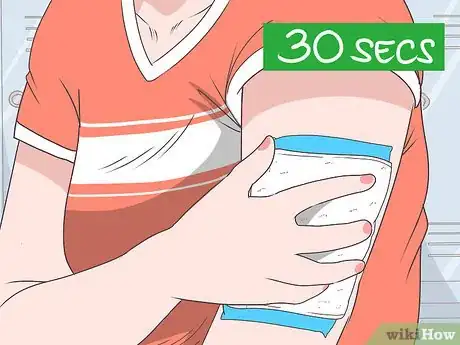
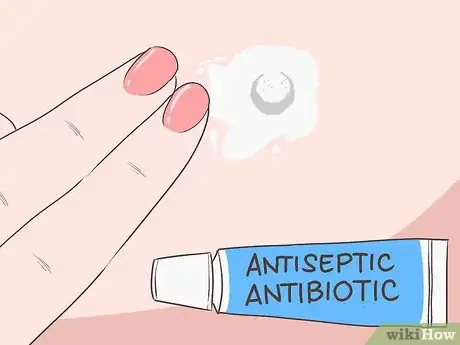
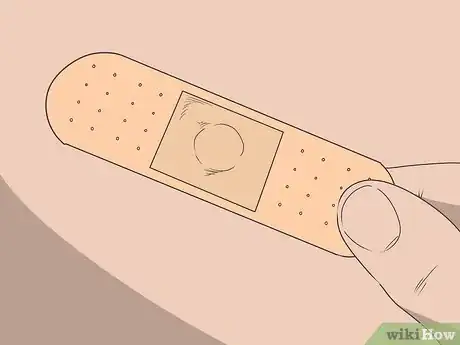
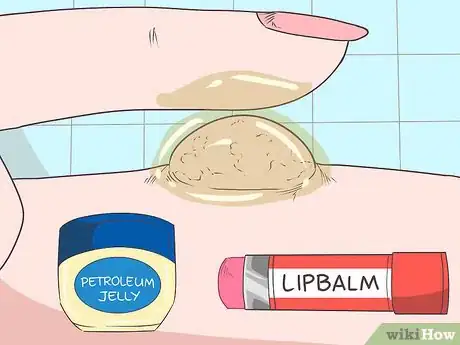
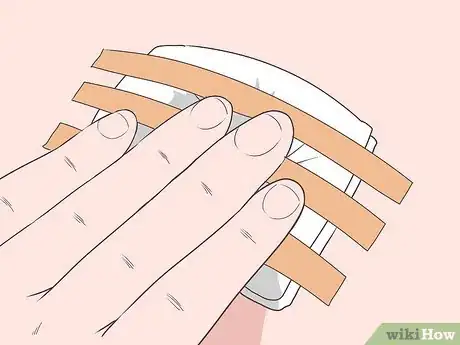
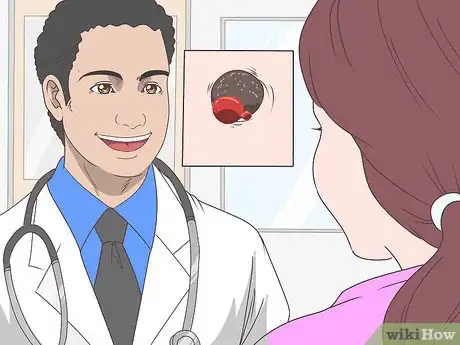
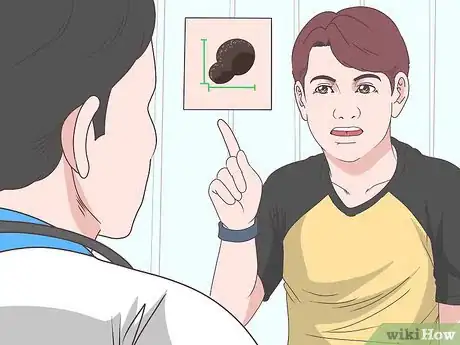



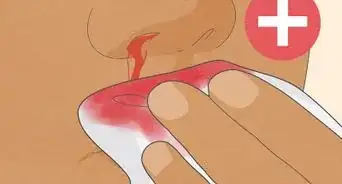
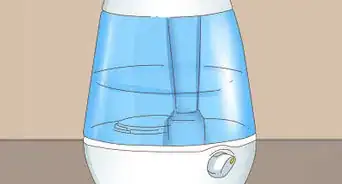
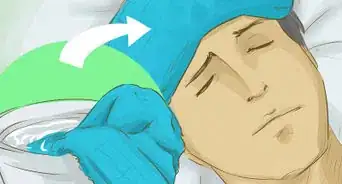


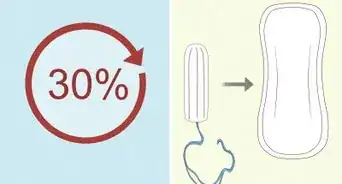


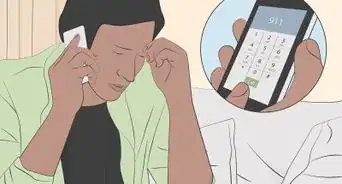


-Step-13-Version-3.webp)
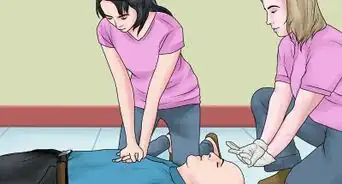








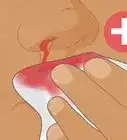
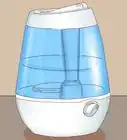
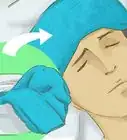



































Medical Disclaimer
The content of this article is not intended to be a substitute for professional medical advice, examination, diagnosis, or treatment. You should always contact your doctor or other qualified healthcare professional before starting, changing, or stopping any kind of health treatment.
Read More...